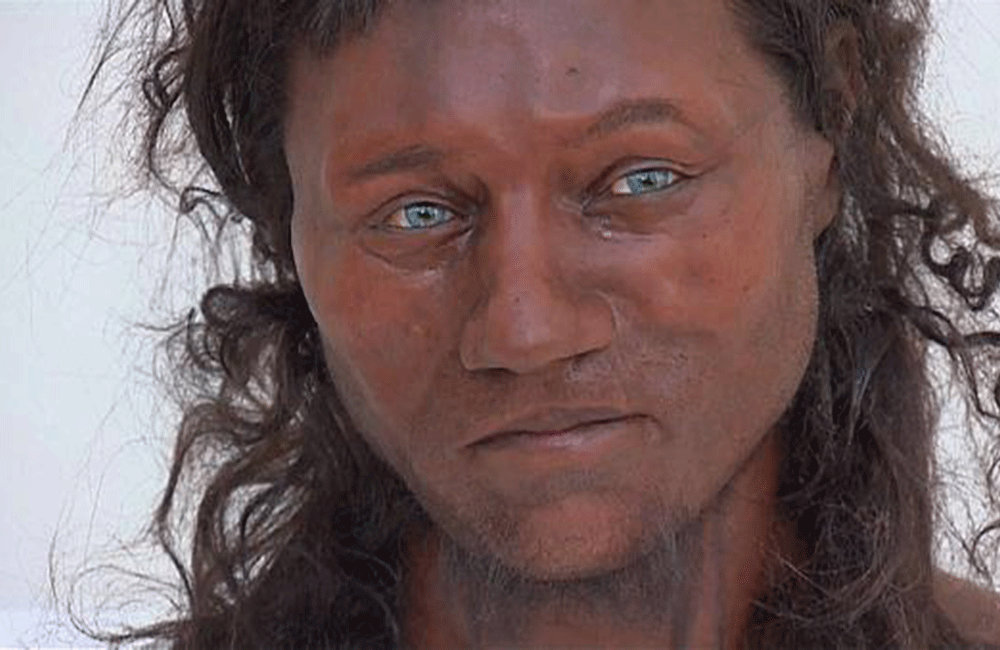A cutting-edge scientific analysis shows that a Briton from 10,000 years ago had dark brown skin and blue eyes.
Researchers from London's Natural History Museum extracted DNA from Cheddar Man, Britain's oldest complete skeleton, which was discovered in 1903. University College London researchers then used the subsequent genome analysis for a facial reconstruction.
It underlines the fact that the lighter skin characteristic of modern Europeans is a relatively recent phenomenon. No prehistoric Briton of this age had previously had their genome analysed.
As such, the analysis provides valuable new insights into the first people to resettle Britain after the last Ice Age. The analysis of Cheddar Man's genome - the "blueprint" for a human, contained in the nuclei of our cells - will be published in a journal, and will also feature in the upcoming Channel 4 documentary The First Brit, Secrets Of The 10,000-year-old Man.
Cheddar Man's remains had been unearthed 115 years ago in Gough's Cave, located in Somerset's Cheddar Gorge. Subsequent examination has shown that the man was short by today's standards - about 5ft 5in - and probably died in his early 20s.
The Natural History Museum researchers extracted the DNA from part of the skull near the ear known as the petrous. At first, project scientists Prof Ian Barnes and Dr Selina Brace weren't sure if they'd get any DNA at all from the remains.
But they were in luck: not only was DNA preserved, but Cheddar Man has since yielded the highest coverage (a measure of the sequencing accuracy) for a genome from this period of European prehistory - known as the Mesolithic, or Middle Stone Age.
They teamed up with researchers at University College London (UCL) to analyse the results, including gene variants associated with hair, eye and skin colour.
They found the Stone Age Briton had dark hair - with a small probability that it was curlier than average - blue eyes and skin that was probably dark brown or black in tone.
This combination might appear striking to us today, but it was a common appearance in western Europe during this period.
Cheddar Man's genome reveals he was closely related to other Mesolithic individuals - so-called Western Hunter-Gatherers - who have been analysed from Spain, Luxembourg and Hungary.
Source : BBC

Leave your comments
Login to post a comment
Post comment as a guest